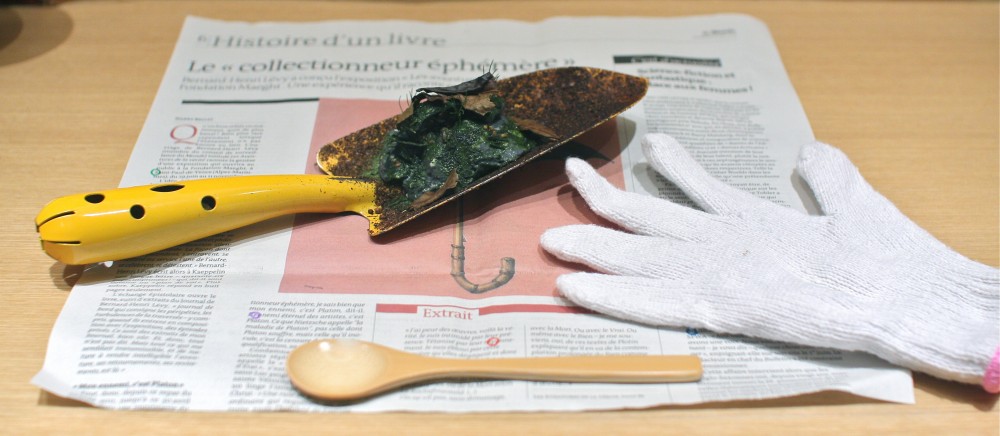In my last blog entry I talked about Japanese delicacies, rare delights of strange and exotic flavors so unique to the tongue that it does not taste like anything familiar. Among the 3 Japanese delicacies is konowata, or sea cucumber guts. For those of you who don’t know what sea cucumbers are, here’s a photo of these soft squishy bottom dwellers:
 Sea cucumbers, also known as bêche-de-mer, holothurians, or trepang, come in all varieties: bright multi-colored, dull grey, spiked, smooth, firm and slippery. To reproduce, sea cucumbers simply shoot eggs and sperm out into the water and hope that there are enough chance meetings for fertilization to occur. When threatened, sea cucumbers violently contract their muscles and eject sticky threads and internal organs out of their anus to ensnare their enemies. Amazingly, even after ejecting their organs out of their anus, they can regenerate these body parts within a day. Such interesting creatures!
Sea cucumbers, also known as bêche-de-mer, holothurians, or trepang, come in all varieties: bright multi-colored, dull grey, spiked, smooth, firm and slippery. To reproduce, sea cucumbers simply shoot eggs and sperm out into the water and hope that there are enough chance meetings for fertilization to occur. When threatened, sea cucumbers violently contract their muscles and eject sticky threads and internal organs out of their anus to ensnare their enemies. Amazingly, even after ejecting their organs out of their anus, they can regenerate these body parts within a day. Such interesting creatures!
Sea cucumber flesh in itself is a delicacy that is commonly eaten in Asia. I love sliced raw sea cucumber in ponzu sauce. It has a very crunchy yet slippery texture. Konowata, the salted intestines, is one of my favorite appetizers to enjoy with a cold glass of dry Japanese sake. Every time I go back to Japan, I buy a jar to take home with me.

The sea cucumbers are first kept in clean seawater to empty the intestines, then they are carefully removed by hand to make sure the viscera does not break and the intestines are kept intact. These intestines are then cleaned with saltwater, and prepared through a multi-step salting process that takes a lot of time and patience. The best konowata are freshly prepared ones in sushi restaurants in Japan, but this is hard to find. I’ve only had the pleasure of having fresh konowata at Kyubei in Tokyo, Japan. The bottled ones are often too salty, though it’s still delicious. I love eating them with grated yuzu rind sprinkled on top, but I also enjoy it with a warm bowl of white rice. It has an intense salty ocean flavor, almost like licking moist seaweed growing on jagged rocks by the shore.

Another wonderful sea cucumber delicacy is konoko, also known as kuchiko, bachiko, or hoshiko. These are dried sea cucumber ovaries that are extracted, salted and dried in the sun. Amazingly, removing the intestines or the ovaries can be done without killing the animal. They can be extracted through a small incision/cut which will heal in about a week, and both the ovaries and the intestines will automatically regenerate. Wow! The ovaries are carefully layered together and dried in the sun in a triangle shape.
 The best way to enjoy this delicacy is to lightly toast it over a flame and shred it. The toasting awakens the deep ocean flavors and releases the intense fragrances. As you chew the konoko pieces, the flavors become more complex. It almost tastes like caviar, but with a nutty undertone.
The best way to enjoy this delicacy is to lightly toast it over a flame and shred it. The toasting awakens the deep ocean flavors and releases the intense fragrances. As you chew the konoko pieces, the flavors become more complex. It almost tastes like caviar, but with a nutty undertone.
 It takes about 10-20 large sea cucumbers to make a bottle of sea cucumber intestines, and even more (sometimes up to 100!!) to make one triangle piece of sea cucumber ovaries. As you can imagine, it is a time consuming process that is done by hand, so these wonderful delicacies are extremely expensive and hard to come by. They can only be purchased through specialty stores and websites, but if you can get your hands on these treats, it is well worth it.
It takes about 10-20 large sea cucumbers to make a bottle of sea cucumber intestines, and even more (sometimes up to 100!!) to make one triangle piece of sea cucumber ovaries. As you can imagine, it is a time consuming process that is done by hand, so these wonderful delicacies are extremely expensive and hard to come by. They can only be purchased through specialty stores and websites, but if you can get your hands on these treats, it is well worth it.
Random trivia: Did you know that sea cucumbers have no brain?

my favorite line, “like licking moist seaweed growing on jagged rocks by the shore”
That was the best image I could conjure up when thinking of how to describe the sea cucumber intestine taste….yes, food is both erotic and dangerous!
I think I might have to draw a line at sea cucumber intestines and ovaries… 🙂
Hi
My company is processing sea cucumber and I have plenty of Konowata.
Do you know any company who want to buy large quantity of Konowata?
Annie Chen
Email : Anniechen1693@gmail.com
My company from Vietnam, we supply many kind of dried sea cucumber and fish maw
Harry Nguyen, email: harry@sovimexco.com